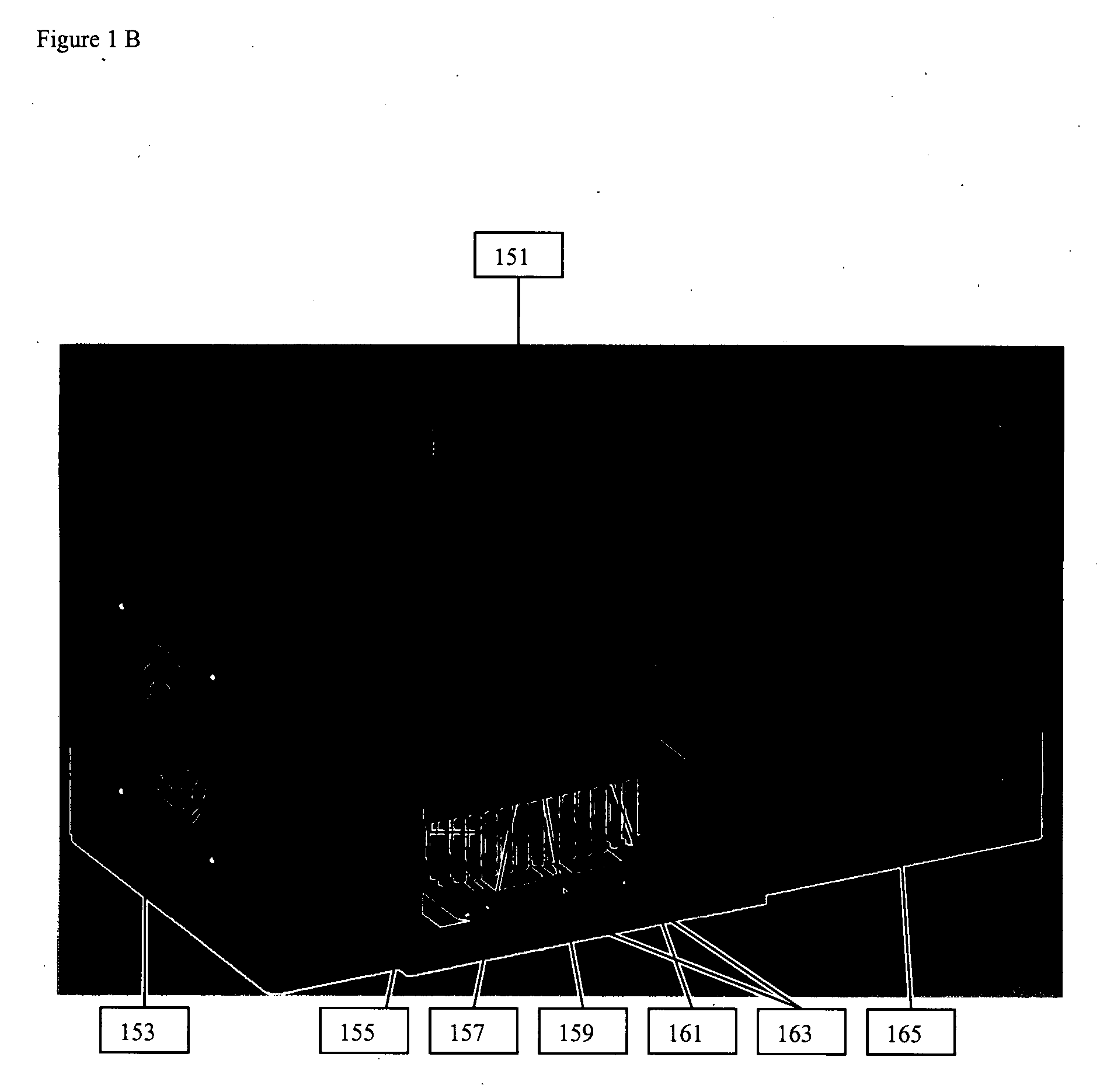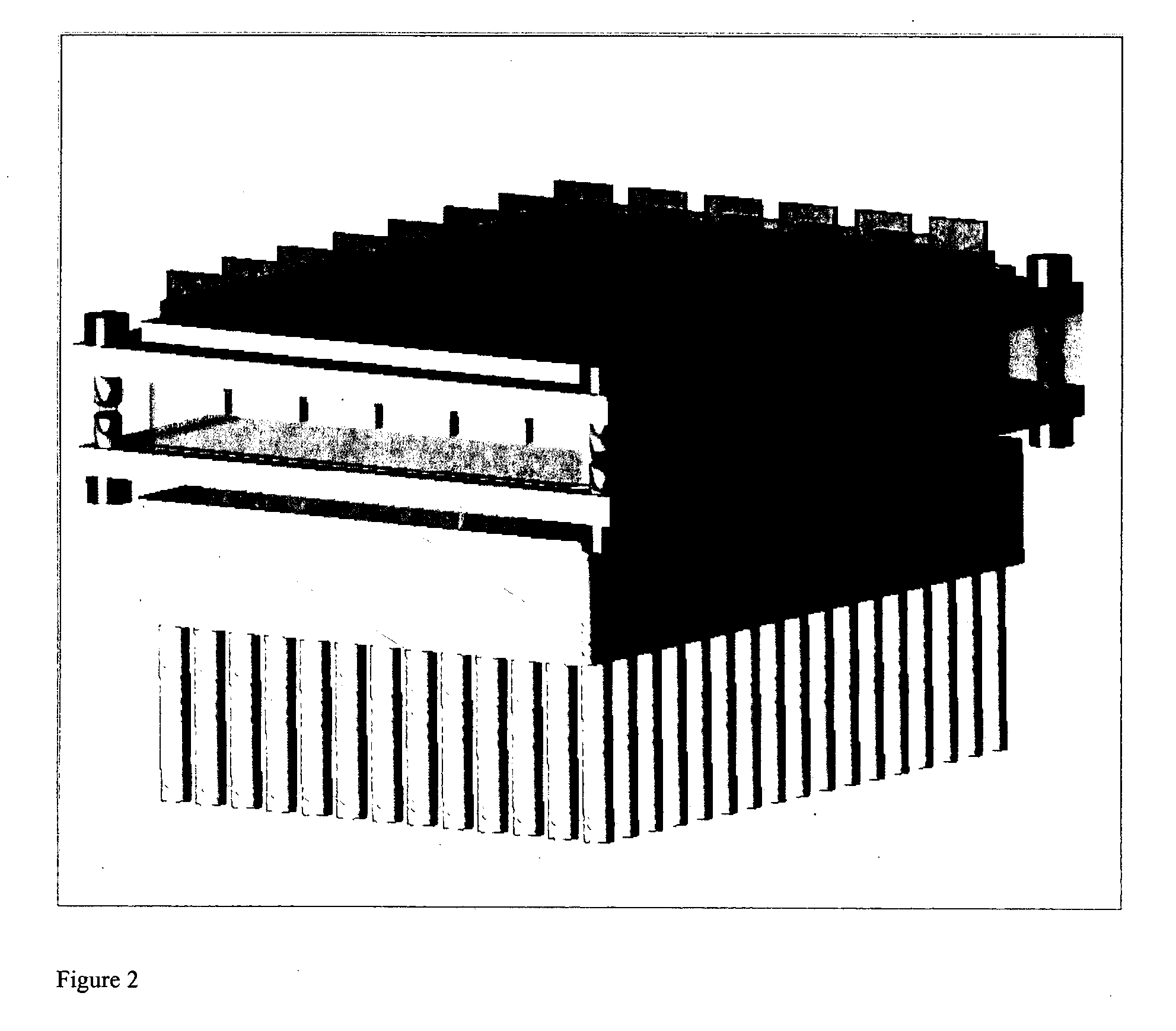Thermal cycling system
- Summary
- Abstract
- Description
- Claims
- Application Information
AI Technical Summary
Benefits of technology
Problems solved by technology
Method used
Image
Examples
example 1
[0204] Stainless Steel PCR Sample Vessels
[0205] Stainless steel PCR reaction sample vessels have been demonstrated as a suitable vessels in which to conduct polymerase chain reactions. The vessels used for initial tests were manufactured from stainless steel tubes with a final outer diameter of 0.061 inches. A two-inch length of sample vessel was closed at one end with a press-fit stainless steel plug.
[0206] Identical 20 μL preparations for real time polymerase chain reactions using SYBR Green intercalating dye as an indicator were placed both in a commercial glass PCR capillary tube and in the metal sample vessel described above. The reagents were then sealed from outside air by floating 20 μL of mineral oil as an upper fluid layer in each vessel. These vessels were temperature cycled together in a commercial real-time PCR machine for 40 cycles, after which the contents of the metal sample vessel were transferred to a commercial glass PCR capillary tube. A melting curve was run o...
example 2
[0207] Realtime PCR
[0208] The liquid metal or thermally conductive fluid heat block is well suited for real time PCR reactions because of the fast temperature ramping, thermal uniformity and reflectivity of the liquid metal or thermally conductive fluid.
[0209] Sample vessels are prepared by placing PCR reaction components into the sample vessels and sealing the vessels to prevent spillage or cross-contamination. The reaction components include buffer, target nucleic acid, appropriate primers and probes, nucleotides, polymerases, as well as optional additional components. In one embodiment, four fluorescent probes are included, each adapted to detect a different target sequence, and a particular reaction vessel may include any one or more of the fluorescent probes. Each probe advantageously responds to light of a different incident wavelength and emits light of a different wavelength.
[0210] A detection module is mounted above the heat block. The detection module includes four dete...
PUM
| Property | Measurement | Unit |
|---|---|---|
| Temperature | aaaaa | aaaaa |
| Temperature | aaaaa | aaaaa |
| Temperature | aaaaa | aaaaa |
Abstract
Description
Claims
Application Information
 Login to View More
Login to View More - R&D
- Intellectual Property
- Life Sciences
- Materials
- Tech Scout
- Unparalleled Data Quality
- Higher Quality Content
- 60% Fewer Hallucinations
Browse by: Latest US Patents, China's latest patents, Technical Efficacy Thesaurus, Application Domain, Technology Topic, Popular Technical Reports.
© 2025 PatSnap. All rights reserved.Legal|Privacy policy|Modern Slavery Act Transparency Statement|Sitemap|About US| Contact US: help@patsnap.com



